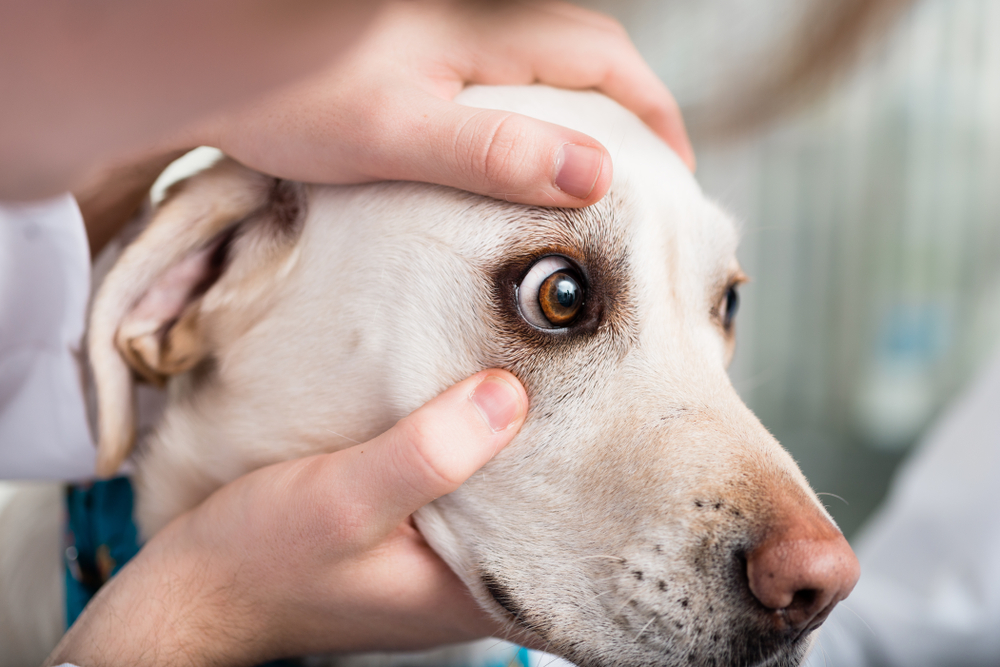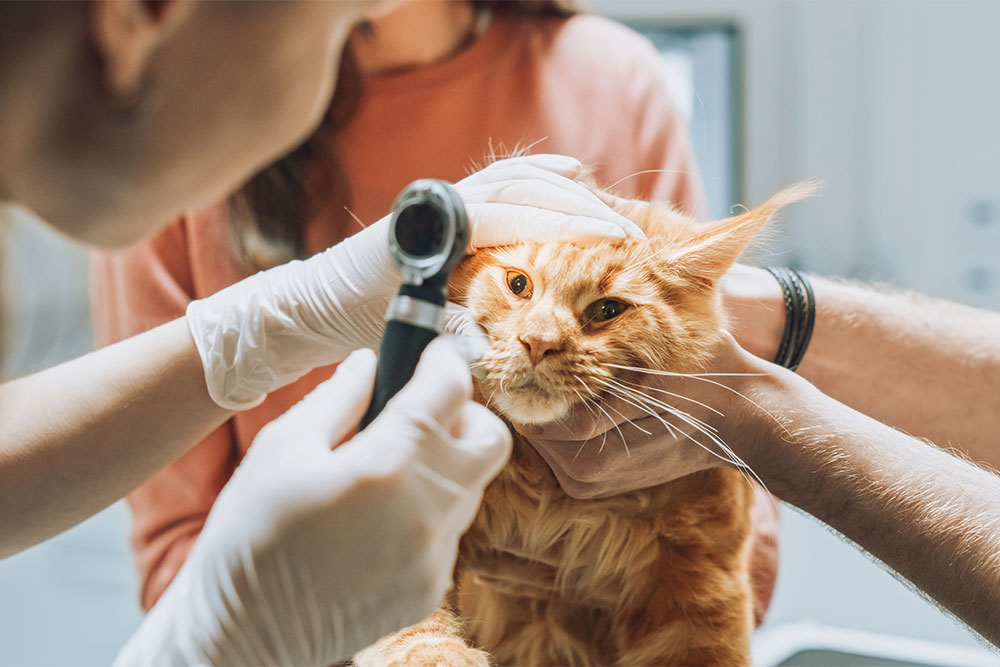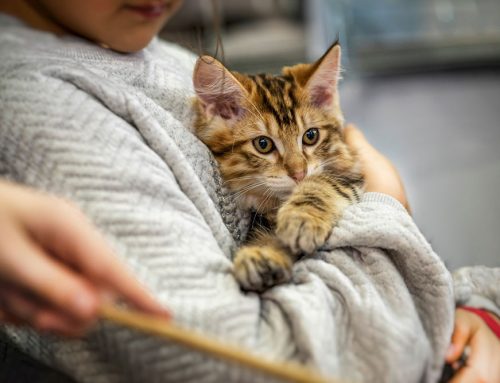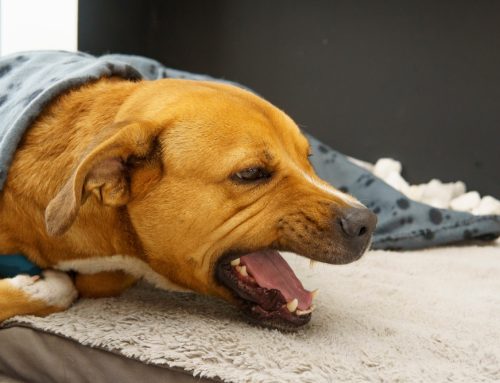Spotting the Most Common Eye Problems in Pets
It may start with a faint haze on the surface of the eye or constant tearing that leaves dark stains on the fur. For many pets, these small changes are the earliest signs of eye disease. Cataracts, ulcers, glaucoma, and infections are among the most common issues pet families face- and each can seriously affect comfort, vision, and overall quality of life.
Livingston Veterinary Care in Livingston, MT, helps owners recognize these early signs so pets can get treatment before the problem escalates.
Understanding Common Eye Problems in Pets
Eye conditions in pets often develop gradually, which makes them easy to overlook until they become advanced. By familiarizing yourself with the most common problems, you’ll be better equipped to spot changes early, seek veterinary help, and protect your pet’s vision and comfort.
Cataracts vs. Nuclear Sclerosis
Many owners confuse cataracts with normal aging changes like nuclear sclerosis. Without a proper ophthalmic exam, the difference can be hard to spot.
Nuclear sclerosis causes a bluish-gray haze in the lens but still allows light to pass through. True cataracts, on the other hand, appear as white, opaque spots that block light and can lead to blindness if left untreated.
How cataracts develop: Cataracts most often form as part of the aging process, particularly in senior dogs. However, certain breeds- including Cocker Spaniels, Poodles, Siberian Huskies, and Labrador Retrievers- are genetically predisposed. Cataracts may also develop secondary to medical conditions such as diabetes mellitus, where rapid changes in blood sugar alter the lens structure. Trauma or inflammation inside the eye can also contribute to cataract formation.
Dogs with nuclear sclerosis usually see well enough to navigate their environment, while dogs with cataracts may bump into furniture, hesitate on stairs, or become reluctant to go outside after dark.
Early cataract detection is key- timely treatment allows pets to remain good surgical candidates. Delaying care can result in complications such as glaucoma or lens-induced inflammation, which make management more difficult.
Dry Eye
Keratoconjunctivitis sicca (KCS), or dry eye, occurs when the tear glands fail to produce enough moisture to keep the cornea lubricated and healthy. Pets with KCS often develop redness, mucous discharge, squinting, and discomfort due to that dryness. Over time, the chronic lack of tear protection can cause corneal scarring, pigmentation, and even vision loss. Treatment generally involves lifelong use of medications that stimulate tear production and artificial tear supplements to protect the eye.
Conjunctivitis in Pets
Conjunctivitis is inflammation of the thin membrane covering the eye and eyelids. It can look dramatic but often results from common issues such as:
- Allergies, irritants, or trauma
- Infections (viral, bacterial, or parasitic)
- Eyelid abnormalities like entropion
- Immune-mediated disease or secondary eye conditions
Typical signs include redness, discharge, swelling, and pawing at the eye. While many cases are treatable, conjunctivitis can also signal more serious underlying disease. A veterinary exam is the safest way to identify the cause and start the right treatment quickly.
Corneal Ulcers
Corneal ulcers can progress rapidly. A small scratch on the surface of the eye can deepen within hours, especially if a pet rubs or paws at it.
These ulcers may result from trauma, foreign material, dry eye, or infection. Signs include excessive tearing, squinting, redness, light sensitivity, and pawing at the eye.
Because untreated ulcers can perforate the cornea and cause permanent vision loss or even loss of the eye, immediate veterinary care is essential. Treatment usually includes antibiotic drops, pain relief, and an Elizabethan collar to protect the eye while it heals.
Glaucoma in Pets
Glaucoma is one of the most painful and dangerous eye diseases in pets. It occurs when fluid cannot drain properly from the eye, causing pressure to build and damage the optic nerve.
Early signs may be subtle: mild redness, slight cloudiness, or behavioral changes such as decreased playfulness. As pressure increases, the eye may appear larger, the cornea turns cloudy, and the pupil may stop reacting normally to light.
Vision lost to glaucoma cannot be restored. However, prompt treatment such as pressure-lowering medications, laser therapy, or surgery can slow progression and preserve remaining sight.
Other Notable Eye Conditions to Watch
While cataracts, ulcers, and glaucoma are the most common, other eye conditions can also significantly affect pets’ comfort and vision.
Cherry Eye and Entropion
Surgical correction is often recommended for cherry eye, which occurs when the tear gland in the third eyelid prolapses, forming a red, fleshy mass in the eye’s corner. Without surgery, chronic irritation and dry eye often follow.
Entropion causes the eyelid to roll inward, making lashes rub against the cornea and leading to irritation, tearing, and sometimes corneal ulcers.
Both conditions are more common in certain breeds, but any dog can be affected. Surgery performed by an experienced veterinarian typically resolves the problem and prevents long-term damage.
Pannus in Dogs
Pannus is an immune-mediated inflammation of the cornea, most often seen in German Shepherds and related breeds. It worsens with UV exposure, especially in sunny or high-altitude environments.
It begins as a pink or red film creeping across the cornea from the outside edge. Left untreated, it can eventually cover the cornea and cause blindness.
While pannus is not curable, it can be managed with lifelong anti-inflammatory medications and UV protection. With consistent care, many dogs maintain good vision for years.
Lens Luxation
Lens luxation occurs when the lens shifts out of its normal position, usually due to inherited weakness or trauma.
If the lens moves into the front chamber of the eye, it can block fluid drainage and trigger acute glaucoma- an emergency situation. Signs include sudden eye pain, redness, and a misshapen pupil. Immediate veterinary attention is crucial to preserve vision and relieve discomfort.
Red Flags: When Your Pet’s Eyes Need Immediate Care
Recognizing urgent symptoms can make the difference between saving sight and permanent vision loss. Signs of eye pain may be subtle but important, including:
- Squinting or excessive tearing
- Rubbing or pawing at the eye
- Redness or swelling
- Avoiding head contact
- Sudden irritability or withdrawal
Any of these, especially when paired with discharge or cloudiness, deserve prompt evaluation.
Ocular Emergencies
Ocular emergencies in dogs and cats include sudden vision loss, obvious trauma, non-reactive pupils, enlarged or cloudy eyes, or painful eyes.
Chemical exposure is also an emergency. If soap, cleaners, or other chemicals touch your pet’s eyes, flush immediately with clean water and seek veterinary care right away. Even short contact can cause permanent damage.
Preventative Measures and Home Care
Being proactive can reduce risks and ensure early intervention when needed.
Routine Check-ups and Early Detection
Routine veterinary visits often include eye checks that detect issues before they become obvious. Livingston Veterinary Services provides comprehensive wellness exams with eye pressure checks, corneal and lens assessments, tear production testing, and screening for breed-related risks.
Administering Eye Medications
Correctly administering eye medications to your pet is essential for treatment success.
Keep your pet calm and secure, and ask for help if needed. Apply drops or ointment exactly as directed, avoid touching the tip to the eye, and use an Elizabethan collar if your pet tries to rub or scratch.

Protecting Your Pet’s Vision Starts with Recognition
Spotting eye problems early gives your pet the best chance at successful treatment and preserved vision. Whether you notice sudden changes like squinting or tearing, or slower developments such as cloudiness, redness, or discharge, a timely veterinary visit can prevent small issues from becoming life-changing ones.
Contact Livingston Veterinary Hospital immediately if you see sudden vision loss, eye trauma, discharge lasting more than a day, or any signs of pain. Our team can quickly diagnose the issue and start treatment right away.
The team at Livingston Veterinary Hospital is dedicated to preserving your pet’s sight and comfort with expert, compassionate eye care tailored to their needs.







Leave A Comment